
The following table shows current 30-year Fairfield mortgage rates. You can use the menus to select other loan durations, alter the loan amount. or change your location.

Maine is well known for its scenery that ranges from jagged, rocky coastline to rolling mountains, to picturesque waterways and dense forests. This area was inhabited by Algonquian-speaking people for thousands of years, and this state has a rich history. Maine was originally part of the Commonwealth of Massachusetts until it voted to secede in 1820. Maine was successful, and it became the twenty-third state to be admitted to the Union in 1820.
Maine is home to a large, diverse living area. There are several smaller towns and tight-knit community that have an old-world feel, or you can live in a larger city and experience the lifestyle there. You can also choose to live in the suburbs that dot the state and are just a short commute from the larger cities. Maine is widely considered to be a premier vacation spot in the United States, and it is the northernmost state in the nation. The local tourism industry is strong, attracting over 35 million visitors who spend $6 billion annually.
People move to Maine for the picturesque scenery, gorgeous views, and the low cost of living. Housing, in particular, is almost 20% lower than the national average, and this combined with the thriving cities draw younger people to this state every year. People have many industries to choose from for their jobs, and there are several higher education opportunities as well.
People move out of the state of Maine partly due to the higher tax rates. Maine has one of the top ten highest tax rates in the nation, and if people are lower-income, it's very hard to afford to pay for property taxes or income tax. Additionally, Maine's largest cities are smaller than the average sized cities, and this can send people from the state who are searching for a true big city fast-paced lifestyle.
Younger people who are just starting out in their careers find Maine attractive as they have room to advance in their careers. Also, people who are older are choosing to move to Maine to spend their retirements because of the slower paced lifestyle you can enjoy all over the state. The lower cost of living draws older people who want to rent their homes instead of purchasing them so they won't pay as much in taxes each year.
During the housing market crash, Maine survived it fairly well in comparison to the rest of the nation. While the state did suffer from dropping housing prices, the prices didn't seem to fall as far or as sharply when you compare Maine's housing market to the United State's market The housing market in Maine started to show signs that it was in trouble in the first quarter of 2006. The market had slowed from its climb and hit a peak before entering the first drop in the second quarter of 2006. This quickly rose into a second peak by the first quarter of 2007 only to drop off again before the market went into its final and highest peak.
The first quarter of 2008 saw Maine's housing market reached the highest peak before beginning to drop quickly. The market dropped until the final quarter of 2008 before going into another slight peak. Once the market peaked in the first quarter of 2009, it began a gradual descent that continued until it hit a slight plateau in the second quarter of 2010. The fourth quarter of 2010 saw the market peaking once again before continuing on its downward track. In 2011, the market leveled off before hitting its lowest point in the second quarter of 2012.
Once the market hit its lowest point, it began on a very slight upward track that saw a slight peak in 2013 before dropping off slightly. It rose again throughout 2014 with a slight dip in the fourth quarter, and it has been on an upward trajectory ever since. The second quarter of 2017 saw the housing market return to the numbers they were at prior to the housing market crash, and the market is currently at a higher point than it was at before the housing market dropped.
The Portland-South Portland Metro area housing market started experiencing trouble with its housing market as early as the third quarter of 2005. This was the time that the housing market went from its steeper climb to a more gradual one, and this kept going until the first quarter of 2006 when the market peaked. Once it peaked, it dropped off quickly only to recover and go into a second peak in the first quarter of 2007. This peak was followed by a plateau that lasted from the third quarter of 2007 until the first quarter of 2008.
The first quarter of 2008 was the final peak before the housing market began to fall. It fell until the third quarter of 2008 when it switched directions and went into a peak in the first quarter of 2009. After this peak, the market resumed its fall, and it continued to fall until the second quarter of 2010. The second quarter of 2010 saw the market rise into a plateau that lasted until the fourth quarter of 2010. Once the market dropped off this plateau, it fell to its lowest point in the second quarter of 2011.
The market began to rise sharply once it reached its lowest spot until the end of 2011 when the market peaked and leveled off into another peak in the second quarter of 2013. This trend lasted until the first quarter of 2014 when the housing market started to climb upward once again. It had a slight peak and dropped at the end of 2014; then it rose into another slight peak in the fourth quarter of 2015. Since that peak, the market has been moving upward, and the fourth quarter of 2016 saw the market surpass where it was prior to the crash.
Through the first 3 quarters of 2020 real estate held up far better than it did during the 2008 housing recession. Central banks and politicians reacted faster and much more aggressively to the COVID-19 crisis than they did to the 2008 recession. Many novel and unconventional policies which began in response to the prior recession were used much more aggressively in this recession. For instance, here are some of the policies which were enacted:
On November 24, 2020 the Federal Housing Finance Agency (FHFA) raised conforming loan limits by 7.42%, reflecting strong annual growth in the nationwide FHFA House Price Index (HPI). 2022 and 2023 saw limit increases of 18.05% and 12.21%, the fastest 2-year growth rates since 1986 & 1987, and inline with the 15.95% growth in 2006. In 2024 and 2025 the limits were increased at more historically normal levels of 5.56% and 5.21%.
The start of the 1990s brought a rocky trend to the Maine real estate market and the Portland Metro. This rocky period lasted until the first quarter of 1994 with several slight increases and drops and then it dropped off significantly. This drop continued until the fourth quarter of 1994 when the housing market started to go up. This rise went into a slight peak at the beginning of 1996, and then it dropped slightly and leveled off once again until the first quarter of 1997. The first quarter of 1994 saw the market begin on a gradual and steady climb.
This gradual climb lasted largely uninterrupted until it saw a very slight decrease in the in the second quarter of 2003. This time marked the start of a steeper climb for Maine's real estate market, and this climb continued until the third quarter of 2005. The third quarter of 2005 saw the market level off before going into the first peak before the housing market began to crash.
Homeownership across the state ranged between 72% and 77% for most of the past 30 years. In 1993 ownership stood at 71.9% before jumping to 76.7% in 1995 and an ultimate high of 77.4% in 1999. Ownership slid to a low of 73.7% in 2003 and rose to a high of 75.3% during 2006. After the housing bubble crashed ownership hovered near 74% until it fell to 71% in 2014 and 69.9% in 2015. In 2016 ownership jumped back up to 72.6%, leaving it nearly 10% above the national average of 63.4%.
| ME Rank | US Rank | Metropolitan Area | 2016 Pop | 2010 Pop | Change | % △ |
|---|---|---|---|---|---|---|
| 1 | 104 | Portland-South Portland | 529,657 | 514,098 | 15,559 | 3.03% |
| 2 | 273 | Bangor | 151,806 | 153,923 | -2,117 | -1.38% |
| 3 | 336 | Augusta-Waterville | 120,569 | 122,151 | -1,582 | -1.30% |
| 4 | 361 | Lewiston-Auburn | 107,319 | 107,702 | -383 | -0.36% |
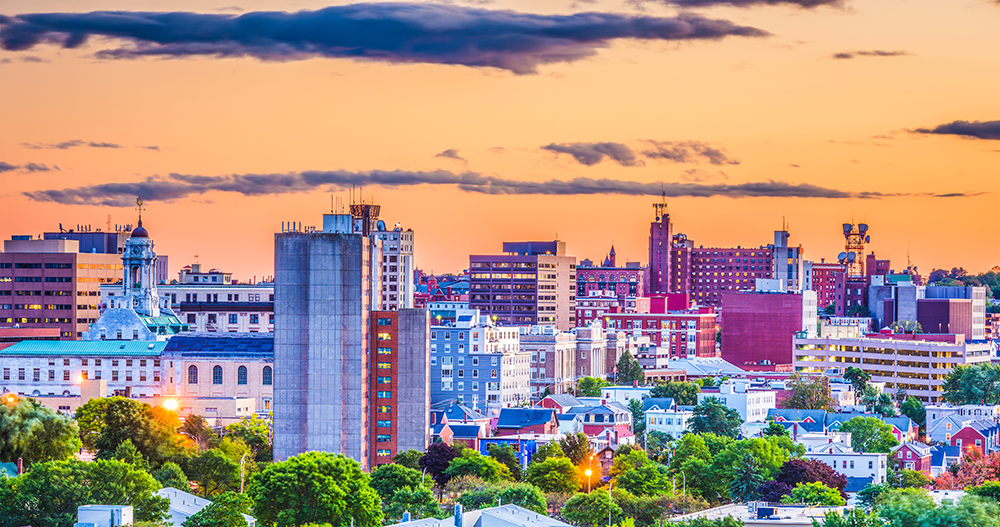
The largest city in the state of Maine is Portland, and it has a population of 66,937 residents as of the 2016 census. The city is also part of the larger Portland-South Portland Metro with a combined population of 529,657 people. The Metro's population is home to around one-third of Maine's total population. Additionally, Portland has survived four devastating fires in its history, and it has a city seal depicting a Phoenix to celebrate its survival.
Portland is largely considered to be Maine's economic capital due to its closeness to Boston, its large port, and the large population. The economy has shifted in recent years from manufacturing and fishing to service-based. This shift has led to a thriving economy and a low unemployment rate. Additionally, its helped Portland residents have higher median incomes than the rest of the state of Maine.
This state has a humid continental climate zone with snowy and cool winters and warm to hot summer months. July and August are the hottest months with temperatures sitting in the mid-70s, and January through March are the coldest months with temperatures sitting around the lower 20s. Also, this state is largely protected from any large storm systems like hurricanes due to the city's location.

Portland and South Portland are home to several areas of cultural interest that draw hundreds of people each year. The Downtown Arts District is home to several museums, performance venues, and galleries. Tourists and residents can also visit Thompson Point and take in a concert or skate in the ice rink. You could take a day trip and visit the Cathedral of the Immaculate Conception, which has been an important feature in Portland since 1854, or take see a music performance by the Portland Symphony Orchestra.
The Portland Public School District serves the city, and it has over 6,700 students enrolled. Students can also choose to study at University of Southern Maine or at the University of Maine School of Law. There are also smaller community colleges and tech schools to attend like the Maine College of Art.
The city of Portland has a diverse economy, and this rings true for the largest employers in the city as well. The largest employer in Portland is the Maine Medical Center with around 6,000 staff. The second biggest employer is the Unum Life Insurance Company of America and it has over 3,000 staff. Finally, the city's third biggest employer is the City of Portland itself with around 2,200 staff.
Portland's economy is doing very well, and it has an unemployment rate that is over 2% below the national average. However, there hasn't been much recent job growth during the last year, but this could change over the next decade. Portland is slated to have around 35% additional jobs added to the local economy during the next decade, and this could help to strengthen the current numbers further.
The local median home price in Portland is $349,900, and the price per square foot is $289. These figures have increased by 11.8% during the last year, and they're slated to rise by another 3.8% in the upcoming year. The local median home price in the Portland-South Portland Metro is $271,400, and you'll pay around $206 per square foot.
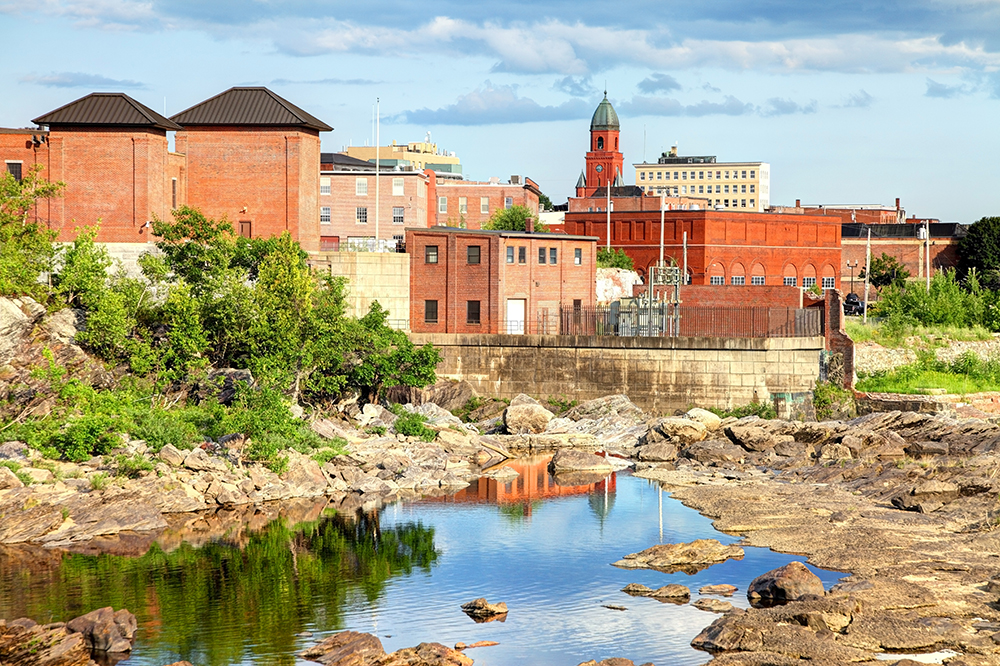
The second biggest city in Maine is the city of Lewiston, and it has an estimated 36,140 people. It Lewiston is part of the larger Lewiston-Auburn Metro area, and they have a combined population of 107,319 people. The city was incorporated by French families in 1795, and to this day it has one of the largest Fench speaking populations in the nation. This city stands out for its low crime rate, low cost of living, and excellent healthcare access.
Healthcare dominates the local economy, and Lewiston is known to be an economic force in the state of Maine. Retail, education, and the service industry all make up important factors that drive this economy, and the entire downtown area has been going through a redevelopment process since 2004. This redevelopment has breathed new life into the economy, and its been going strong ever since.
Lewiston is characterized by a humid continental climate with 4 distinct seasons. In the summertime, it is typically warm with temperates in the low-80s with June and July being the hottest months. The winter months typically bring snowy, cool weather with temperatures staying around freezing in January and February.
This city is home to several cultural areas and points so interest scattered throughout the city. The Lewiston Public Library contains over 100,000 books. Museum L-A pays tribute to the city's past in the textile industry, and visitors can walk through textile mill simulations. The Great Falls Balloon Festival is held every August, and this event draws people from all over the county. Finally, the Dempsey Challenge is held every year, and this cycling event for cancer research draws participants from all over the world.
The Lewiston Public School System operates nine schools throughout the city, and there are also private schools as well. Students can choose to attend the University of Southern Maine or the Maine College of Health Professions. There are also shorter programs at the Bates College.
The economy of this city is healthcare based, and this reflects on the top employers. The largest employer in Lewiston is Central Maine Medical Center with around 2,100 staff. The second biggest employer is St. Mary's Health System with 1,790 employees. Finally, the city's third biggest employer is TD Bank with 1,100 staff members.
Lewiston's economy is strong, and it has an unemployment rate that is lower than the national average. However, there hasn't been recent job growth during the last year, but this may change in the next few years. Over the next ten years, Lewiston is looking to have about 33% more jobs available to its residents.
The local median home price for Lewiston is currently around $129,000, and it has an average price per square foot of around $100. These prices have gone up by 8.6% during the last year, and they're estimated to rise another 4.8% during the upcoming year. The Lewiston-Auburn Metro has a local median home price of $149,900, and you'll pay $125 per square foot.
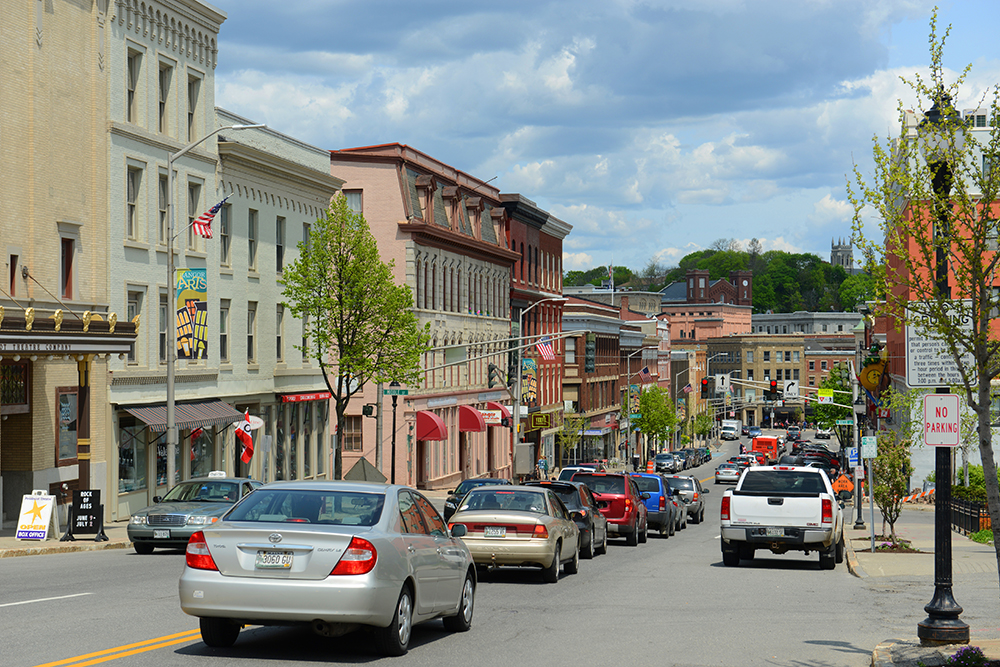
The third-largest city in Maine is the city of Bangor with 31,985 residents as of 2016. Bangor is also part of the larger Bangor Metro, and they have a combined population of 151,806 people. This city was incorporated in 1791, and it is one of fifteen cities in the nation with this name. Historically, this city was an important stop on the great circle air route between Europe and the United State's East Coast.
Bangor is the largest market town, media center, distribution center, and transportation hub in the five-county area. Retail, finance, healthcare, education, manufacturing, and tourism make up the economy. In addition, Bangor is a popular destination for outdoor enthusiasts.
Residents have a humid continental climate in this city with warm to hot summer months and cold, snowy winter months. June, July, and August are the hottest months with temperatures staying around the 70s, and December through January are the coldest months with temperatures staying below freezing.
The Bangor State Fair is one of the oldest in the nation, and it has been going on for over 150 years. There are several venues and performing arts groups around the city, and you can take a performance from the Bangor Symphony Orchestra. Additionally, the Maine Discovery Museum is a huge children's museum that has been open since 2001.
Bangor is home to the University of Maine, and this university has been open and accepting students since 1868. Students can also pursue a variety of undergraduate programs at the Eastern Maine Community College or they can take several classes at Husson University.
The largest employer in this city is Eastern Maine Healthcare System and it employs over 1,500 employees. The second biggest employer is the University of Maine and it has 1,000 staff members. Finally, the city's third biggest employer is Hannaford Supermarkets with 800 employees.
Bangor's economy is doing well, and it currently has an unemployment rate that is lower than the national average. However, there hasn't been any job growth during the last year, but this is on track to change. Over the next ten years, Bangor is estimated to have around 30% more jobs available to residents.
The local median home price for Bangor is $126,000, and you'll pay $104 per square foot. These prices have gone up by 1.9% during the last year, and they're estimated to rise by another 3.8% in the upcoming year. The local median home price for the Bangor Metro is $155,900, and you'll pay $108 per square foot.
Augusta

Augusta has a population of 18,494 and is the state capital. It is home to the Maine State Museum, the Children's Discovery Museum, Old Fort Western and state governor's residence The Blaine House.
Ogunquit
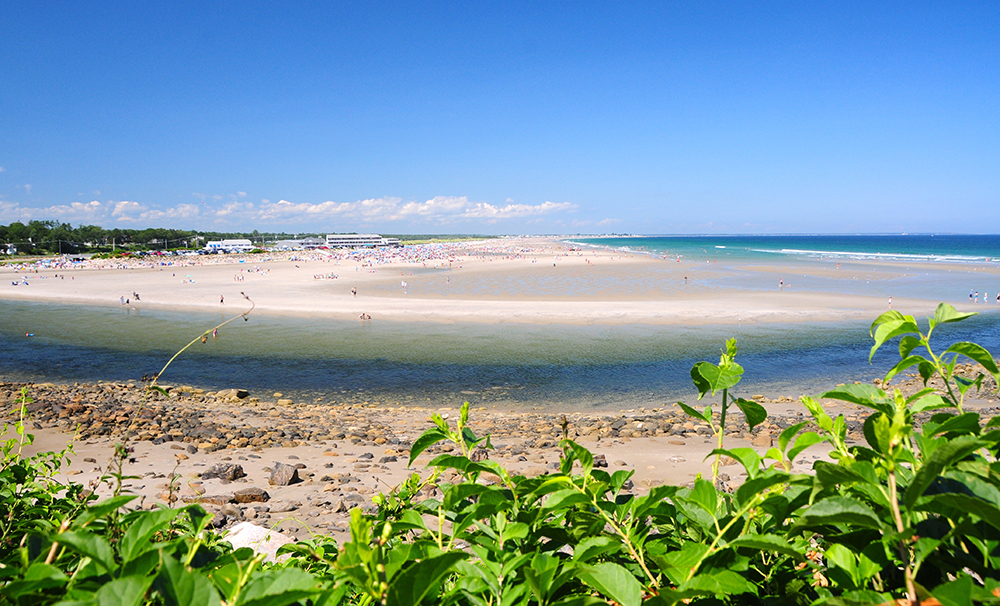
The coastal town of Ogunquit offers white sand beaches and natural dunes, which is a rarity on much of the Maine Coast. There's a one mile paved oceanside walkway, a playhouse, good seafood restaurants, and trolleys that run in season from one end of town to the other. Ogunquit is near enough to the Boston area for tourists to make weekend car trips & is about an hour south of Portland.
Mt. Desert Island

Mt. Desert Island, which encompasses Acadia National Park, as well as the towns of Bar Harbor, Bass Harbor, Southwest Harbor and others, has always been an area of vacation homes. The area is rich in history, with its rusticating trails from one end of the island to the other, its craggy coastline that's still home to some of Maine's fishing industry, and its historic villages. It's a very quiet place to live most times of the year, but summer is the season, and life can be exciting with the influx of seasonal visitors, many of whom have been making the trek to the Island over many generations.
According to the United States Census an estimated 1,331,479 people live in the state of Maine. The state has 30842.92 mi² of land area, which gave it a population density of 43.17 per mi². Here is a list of cities, towns, villages & Census Designated Places with more than 5,000 residents, with their estimated population as of June 2016 & the 2010 United States Census. For Census Designated Places (CDP) where there was no population estimate available for 2016 the 2011-2015 American Community Survey 5-Year Estimates data was used.
All table columns are sortable. Click on the column headers to sort by that column. Click again to sort low to high. Cities with higher levels of population growth typically see the increased demand drive faster real estate price appreciation.
| Rank | Geography | County | 2016 Pop | 2010 Pop | Change | % △ | Land mi² | Pop Den mi² |
|---|---|---|---|---|---|---|---|---|
| 1 | Portland | Cumberland | 66,937 | 66,194 | 743 | 1.12% | 21.31 | 3,141.11 |
| 2 | Lewiston | Androscoggin | 36,140 | 36,592 | -452 | -1.24% | 34.15 | 1,058.27 |
| 3 | Bangor | Penobscot | 31,985 | 33,039 | -1,054 | -3.19% | 34.26 | 933.6 |
| 4 | South Portland | Cumberland | 25,577 | 25,002 | 575 | 2.30% | 11.99 | 2,133.19 |
| 5 | Auburn | Androscoggin | 22,948 | 23,055 | -107 | -0.46% | 59.33 | 386.79 |
| 6 | Biddeford | York | 21,362 | 21,277 | 85 | 0.40% | 30.09 | 709.94 |
| 7 | Sanford | York | 20,938 | 20,798 | 140 | 0.67% | 47.78 | 438.22 |
| 8 | Brunswick | Cumberland | 20,645 | 20,278 | 367 | 1.81% | 46.73 | 441.79 |
| 9 | Scarborough | Cumberland | 20,023 | 18,919 | 1,104 | 5.84% | 47.61 | 420.56 |
| 10 | Saco | York | 19,213 | 18,482 | 731 | 3.96% | 38.46 | 499.56 |
| 11 | Augusta | Kennebec | 18,494 | 19,136 | -642 | -3.35% | 55.13 | 335.46 |
| 12 | Westbrook | Cumberland | 18,402 | 17,494 | 908 | 5.19% | 17.12 | 1,074.88 |
| 13 | Windham | Cumberland | 18,003 | 17,001 | 1,002 | 5.89% | 46.56 | 386.66 |
| 14 | Gorham | Cumberland | 17,381 | 16,381 | 1,000 | 6.10% | 50.62 | 343.36 |
| 15 | Waterville | Kennebec | 16,406 | 15,722 | 684 | 4.35% | 13.58 | 1,208.10 |
| Brunswick CDP | Cumberland | 15,453 | 15,175 | 278 | 1.83% | 14.51 | 1,064.99 | |
| 16 | York | York | 12,947 | 12,529 | 418 | 3.34% | 54.67 | 236.82 |
| 17 | Falmouth | Cumberland | 12,102 | 11,185 | 917 | 8.20% | 29.38 | 411.91 |
| 18 | Kennebunk | York | 11,320 | 10,798 | 522 | 4.83% | 35.05 | 322.97 |
| 19 | Orono | Penobscot | 11,242 | 10,362 | 880 | 8.49% | 18.19 | 618.03 |
| 20 | Wells | York | 10,184 | 9,589 | 595 | 6.21% | 57.55 | 176.96 |
| 21 | Standish | Cumberland | 10,174 | 9,874 | 300 | 3.04% | 59.03 | 172.35 |
| Sanford CDP | York | 9,761 | 9,761 | 0 | 0.00% | 5.11 | 1,910.18 | |
| 22 | Kittery | York | 9,644 | 9,490 | 154 | 1.62% | 17.78 | 542.41 |
| Orono CDP | Penobscot | 9,522 | 9,474 | 48 | 0.51% | 7.05 | 1,350.64 | |
| 23 | Cape Elizabeth | Cumberland | 9,329 | 9,015 | 314 | 3.48% | 14.7 | 634.63 |
| 24 | Brewer | Penobscot | 9,107 | 9,482 | -375 | -3.95% | 15.23 | 597.96 |
| 25 | Presque Isle | Aroostook | 9,106 | 9,692 | -586 | -6.05% | 75.76 | 120.2 |
| 26 | Lisbon | Androscoggin | 8,846 | 9,009 | -163 | -1.81% | 22.82 | 387.64 |
| 27 | Old Orchard Beach | York | 8,809 | 8,624 | 185 | 2.15% | 7.43 | 1,185.60 |
| 28 | Topsham | Sagadahoc | 8,786 | 8,784 | 2 | 0.02% | 32.2 | 272.86 |
| Old Orchard Beach CDP | York | 8,697 | 8,624 | 73 | 0.85% | 7.43 | 1,170.52 | |
| 29 | Yarmouth | Cumberland | 8,558 | 8,349 | 209 | 2.50% | 13.35 | 641.05 |
| 30 | Freeport | Cumberland | 8,425 | 7,879 | 546 | 6.93% | 34.7 | 242.8 |
| 31 | Bath | Sagadahoc | 8,303 | 8,514 | -211 | -2.48% | 9.1 | 912.42 |
| 32 | Skowhegan | Somerset | 8,302 | 8,589 | -287 | -3.34% | 58.84 | 141.09 |
| 33 | Buxton | York | 8,195 | 8,034 | 161 | 2.00% | 40.52 | 202.25 |
| 34 | Gray | Cumberland | 8,115 | 7,761 | 354 | 4.56% | 43.27 | 187.54 |
| 35 | Ellsworth | Hancock | 7,911 | 7,741 | 170 | 2.20% | 79.28 | 99.79 |
| 36 | Cumberland | Cumberland | 7,843 | 7,211 | 632 | 8.76% | 22.88 | 342.79 |
| 37 | Waterboro | York | 7,824 | 7,693 | 131 | 1.70% | 55.33 | 141.41 |
| 38 | Caribou | Aroostook | 7,736 | 8,189 | -453 | -5.53% | 79.26 | 97.6 |
| Winslow CDP | Kennebec | 7,661 | 7,794 | -133 | -1.71% | 36.82 | 208.07 | |
| 39 | Farmington | Franklin | 7,576 | 7,760 | -184 | -2.37% | 55.67 | 136.09 |
| 40 | Berwick | York | 7,573 | 7,246 | 327 | 4.51% | 37.52 | 201.84 |
| 41 | Winslow | Kennebec | 7,569 | 7,794 | -225 | -2.89% | 36.82 | 205.57 |
| 42 | Old Town | Penobscot | 7,518 | 7,840 | -322 | -4.11% | 38.85 | 193.51 |
| 43 | South Berwick | York | 7,433 | 7,220 | 213 | 2.95% | 32.13 | 231.34 |
| 44 | Hampden | Penobscot | 7,384 | 7,257 | 127 | 1.75% | 37.94 | 194.62 |
| 45 | Rockland | Knox | 7,179 | 7,297 | -118 | -1.62% | 12.84 | 559.11 |
| 46 | Belfast | Waldo | 6,647 | 6,668 | -21 | -0.31% | 34.04 | 195.27 |
| 47 | Fairfield | Somerset | 6,585 | 6,735 | -150 | -2.23% | 53.75 | 122.51 |
| Topsham CDP | Sagadahoc | 6,483 | 5,931 | 552 | 9.31% | 11.06 | 586.17 | |
| Gorham CDP | Cumberland | 6,445 | 6,882 | -437 | -6.35% | 7.66 | 841.38 | |
| 48 | Eliot | York | 6,442 | 6,204 | 238 | 3.84% | 19.78 | 325.68 |
| Skowhegan CDP | Somerset | 6,260 | 6,297 | -37 | -0.59% | 13.37 | 468.21 | |
| 49 | Lebanon | York | 6,174 | 6,031 | 143 | 2.37% | 55 | 112.25 |
| 50 | Oakland | Kennebec | 6,158 | 6,240 | -82 | -1.31% | 25.67 | 239.89 |
| 51 | Winthrop | Kennebec | 5,970 | 6,092 | -122 | -2.00% | 31.22 | 191.22 |
| 52 | Hermon | Penobscot | 5,865 | 5,416 | 449 | 8.29% | 35.87 | 163.51 |
| 53 | Houlton | Aroostook | 5,828 | 6,123 | -295 | -4.82% | 36.71 | 158.76 |
| 54 | Turner | Androscoggin | 5,765 | 5,734 | 31 | 0.54% | 59.26 | 97.28 |
| 55 | New Gloucester | Cumberland | 5,713 | 5,542 | 171 | 3.09% | 47.12 | 121.24 |
| 56 | Rumford | Oxford | 5,711 | 5,841 | -130 | -2.23% | 68.55 | 83.31 |
| Yarmouth CDP | Cumberland | 5,628 | 5,869 | -241 | -4.11% | 5.23 | 1,076.10 | |
| Kennebunk CDP | York | 5,621 | 5,214 | 407 | 7.81% | 6.75 | 832.74 | |
| 57 | Gardiner | Kennebec | 5,620 | 5,800 | -180 | -3.10% | 15.65 | 359.11 |
| 58 | Poland | Androscoggin | 5,544 | 5,376 | 168 | 3.13% | 42.23 | 131.28 |
| 59 | Bar Harbor | Hancock | 5,394 | 5,235 | 159 | 3.04% | 42.24 | 127.7 |
| 60 | Bridgton | Cumberland | 5,384 | 5,210 | 174 | 3.34% | 56.79 | 94.81 |
| 61 | Paris | Oxford | 5,127 | 5,183 | -56 | -1.08% | 40.77 | 125.75 |
| 62 | Waldoboro | Lincoln | 5,029 | 5,075 | -46 | -0.91% | 71.5 | 70.34 |
| 63 | Sabattus | Androscoggin | 5,015 | 4,876 | 139 | 2.85% | 25.71 | 195.06 |
Annual Estimates of the Resident Population: April 1, 2010 to July 1, 2016
Source: U.S. Census Bureau, Population Division
Release Date: May 2017.
As of 2025 the conforming loan limit across the United States is set to $806,500, with a ceiling of 150% that amount in areas where median home values are higher. High local affordability makes the $806,500 ceiling apply statewide for single unit homes. Dual unit homes have a limit of $1,032,650, triple unit homes have a limit of $1,248,150 & quadruple unit homes have a limit of $1,551,250. Jumbo loans typically have a slightly higher rate of interest than conforming mortgages, though spreads vary based on credit market conditions.
The most popular type of loan is a 30 year mortgage. Given that homes are quite affordable across the state due to high local incomes, 15 year fixed loans are another popular option which helps home buyers build equity faster and save on interest expenses.
Adjustable rate mortgages (ARM) are also an option for potential homeowners who don't believe they will live in the home for many years and want to write off interest payments. Balloon mortgages are another route for aspiring homeowners. Balloon mortgages are when a large portion of the borrowed principle is repaid in a single payment at the end of the loan period. Balloon loans are not common for most residential buyers, but are more common for commercial loans and people with significant financial assets.
Mortgage underwriters prefer debt-to-income ratios to be below 40%, but other factors are considered on the loan application. When qualifying for a loan, a credit score of 720 or better can help secure a favorable loan. As a general rule of thumb, coming to the table with a 20 percent down payment is usually the best approach. This down payment requirement does not apply for Federal assistance programs such as FHA, in which applicants can have a lower credit score and income but still receive financing.
The piggyback loan is another type of mortgage which is simply two mortgages in one. The piggyback loan can eliminate the need for private mortgage insurance by covering 80% of the home's value with the first loan, while the second loan helps to pay for part of the down payment.
The Department of Housing and Urban Development (HUD) offers special loan programs such as FHA loans to those who may not qualify for conventional loans due to a lower credit score or a limited down payment.
Military veterans can take advantage of VA loans which offer affordable rates & do not require a down payment.
USDA loans can help people with low incomes in rural parts of the state qualify for a subsidized low-interest loan. Given the low population density throughout most of the state, most areas qualify.
Maine is home to several different mortgage and housing programs that are designed to help veterans, first-time homebuyers, and low-income people get and keep an affordable mortgage.
Maine First Home Program
The Maine First Home Program provides first-time homebuyers the chance to purchase a home with a fixed-rate mortgage with a little or no down payment. Any applicant does have to meet household income limits, but these limits are set, so almost any household will be eligible. Additionally, you can purchase a new or existing single-family home, a condo, two to four-unit apartment buildings, or mobile homes.
There are several other benefits applicants are entitled to under this program, and they include:
Salute ME and Salute Home Again
The Salute ME and Salute Home Again is a program by the Maine Housing Authority that is designed to give Maine's veterans a lower rate on their First Home mortgage program. Veterans or active duty military personnel will get a 0.25% discount on their First Home Program mortgage. They'll also be entitled to $3,500 in closing costs and down payment assistance as well.
To be eligible for this program, all applicants have to meet certain eligibility requirements including:
Some cities & counties also offer home buyers other compelling programs worth exploring.
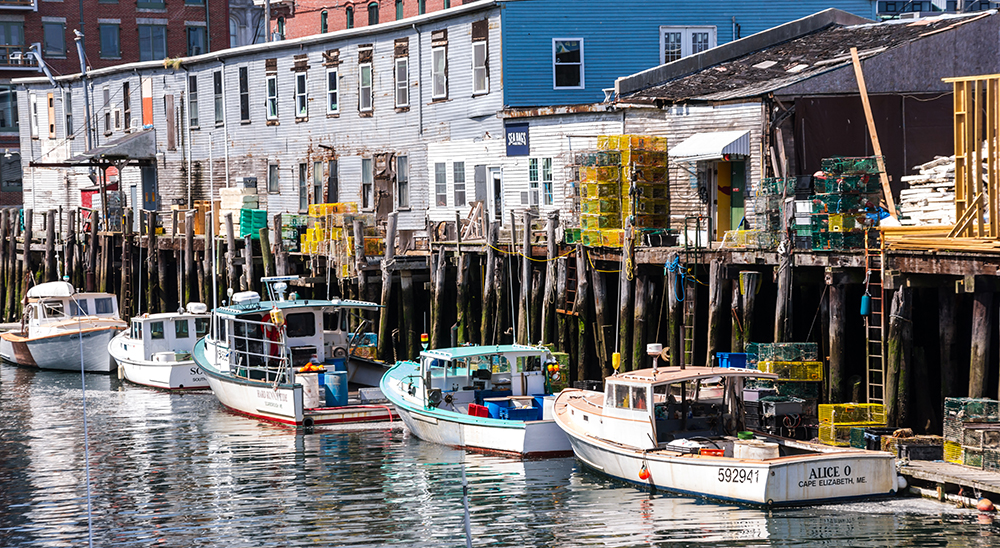
Homeowner's insurance policies typically do not cover flooding. Most of the state of Maine is considered to have a very low flooding risk. Counties with relatively elevated risk profiles include:
The NFIP does not charge nearly enough to cover the expected costs of its liabilities. The assessments are not sufficient to build any buffer to cover an extraordinary year, such as what occurred with Hurricane Katrina in 2005 or Hurricane Sandy in 2012. Because homeowners don't incur the full cost of building in a flood zone we end up with more houses there than if homeowners incurred the full cost of the flood risk, which exacerbates the government's costs in the next disaster.
Homeowners who live in lower risk areas & are not required to purchase flood insurance heavily cross-subsidize homeowners who are in areas where floods are more common.
Most of the state has a very low eathquake risk, but Washington county - the eastmost portion of Maine & York county in the southern tip of the state have a low earthquake risk. Standard rental and homeowner insurance policies typically do not cover earthquake damage, though they usually cover losses caused by fires which resulted from an earthquake. You can supplement your homeowner's insurance with an earthquake policy.
Maine has a very low risk of wildfires, tornadoes, hail & earthquakes.
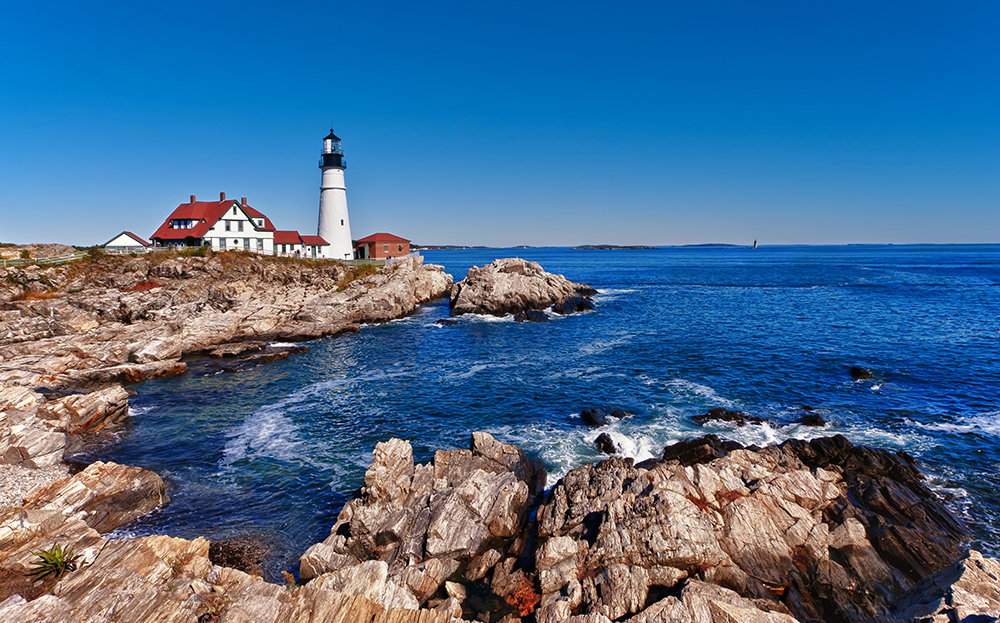
Maine charges above average property tax rates as the average homeowner was assessed 1.43% of the home's value in 2016 compared against a national average of 1.24%. On average, a single family homeowner in Maine can expect to pay around $3,937 per year on a property that is assessed at $274,961. This price works out to around 3.51% of the property owner's annual income.
In the Portland area the median annual property tax payment was $4,448 in 2016. The property tax rates that the state collects fluctuates by county, and Cumberland County pays the highest average amount per property. Washington County has the lowest property taxes each year at $1,065 per property.
Maine allows people who don't legally own a property to acquire it without buying it outright through its Adverse Possession Law. However, Maine has a long period that a person must occupy the property before they can ask for the deed to the land.
A person must move onto a piece of property and openly live there and pay property taxes for an uninterrupted period of 20 years before they're entitled to the deed. This is known as a hostile possession. The person who rightfully owns the land has ten years to challenge the hostile possession of the land in question, but if the 20 years has already gone by, the original owner has no claim to the land that the squatter obtained the deed to.
Maine's Homestead Possession Law protects a certain section of any property that is owned by the head of household from being confiscated or sold off to satisfy debts due to an extreme case of financial hardship like a foreclosure.
The homestead in question must be a residential property, and it must be the primary residence of the person claiming the homestead or by a cooperative housing corporation with a permanent resident that qualifies as a shareholder. For Maine, a homestead is restricted to:
When it comes to foreclosures, Maine mortgage lenders use the judicial process. This means that the mortgage lender has to go through the court system to complete a foreclosure, and the process starts with the mortgage lender suing the defaulted borrower. Once they've done this, they petition the courts to start the foreclosure process.
Maine is also a state that allows for recourse once the property sells at a foreclosure sale, but there are limits to how much the mortgage lender can get from a deficiency judgment. The mortgage lender may only sue for the deficiency amount that is predetermined at the point of sale.
So, a mortgage lender sells the property at a foreclosure sale, but they don't get the full amount that was owed. The mortgage lender can sue the defaulted borrower for the difference between the fair market value of the property at the time of the foreclosure sale and the total amount due to the mortgage lender including the fees, interest, and sale costs. This can result in the defaulter borrower's bank accounts being levied and their wages garnished.
Please check out the following resources to learn more about the Maine real estate market.
The Federal Reserve has begun lowering interest rates. Lock in today's low rates and save on your loan.
Are you paying too much for your mortgage?
Check your mortgage options with a trusted Fairfield lender.
Answer a few questions below and connect with a lender who can help save you money today!